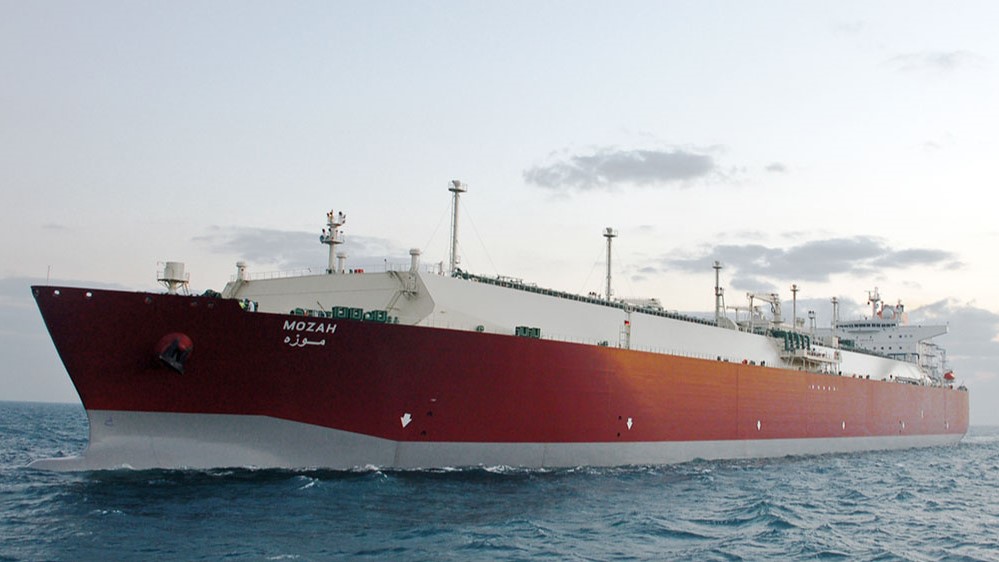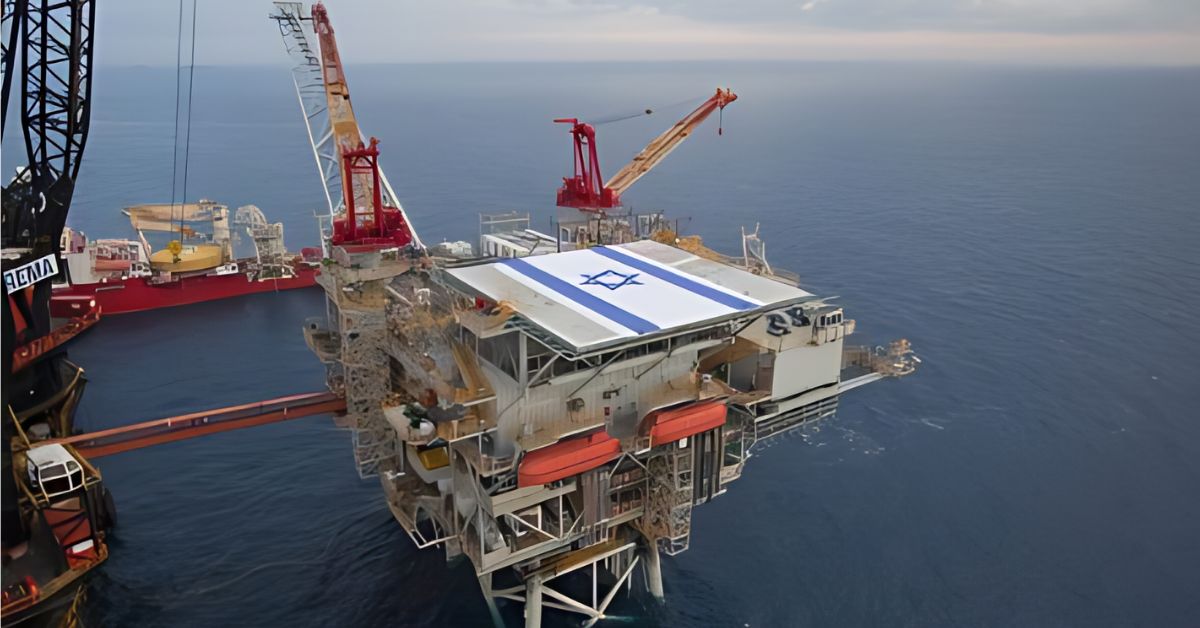DUBAI, UAE — The ongoing conflict between Israel and Hamas has significantly impacted the region, affecting both the population and infrastructure. The escalation on October 7 led to the temporary suspension of gas production at the Tamar plant, located near Gaza, though operations resumed on November 9. This interruption underscores the potential implications of the war on Israel’s gas projects and its importers.
Israel, since 2020, has been a major supplier of natural gas to Jordan, providing almost all its supply, and to Egypt, contributing 5 percent-10 percent of its needs, as per S&P Commodity Insights data. However, S&P Global Ratings suggests that Egypt’s gas supply faces greater vulnerability than Jordan’s, given Jordan’s available LNG plant and an existing offtake agreement with Israel.
A recent S&P Global report anticipates that the war will mainly be confined to Israel and Gaza, lasting no more than three to six months under the current base case scenario. Nevertheless, a further escalation, potentially spreading beyond Israel’s borders, could risk pipeline damage or disrupt shipping in the Strait of Hormuz. Such an event might halt Israel’s gas exports entirely.
The report indicates that many Gulf Cooperation Council (GCC) producers, with most of their gas production already contracted, would not be able to compensate for this deficit, potentially leading to a prolonged shortage in Egypt amidst already tight supplies.
At A Glance * Conflict's Impact on Israel and Gaza: The ongoing conflict between Israel and Hamas has significantly affected the region, impacting both populations and infrastructure. * Disruption in Gas Production: The Tamar gas plant near Gaza suspended operations on October 7 due to the conflict, resuming on November 9, highlighting the war's impact on Israel's gas projects and its importers. * Israel's Role as a Gas Supplier: Since 2020, Israel has been a major supplier of natural gas to Jordan (almost all its supply) and Egypt (5-10% of its needs). * Vulnerability of Egypt's Gas Supply: Egypt's gas supply is more vulnerable than Jordan's due to the lack of an LNG plant and reliance on Israel. * S&P Global Report Predictions: The war is expected to be confined to Israel and Gaza, lasting 3-6 months, but risks include pipeline damage or disruptions in the Strait of Hormuz, potentially halting Israel's gas exports. * GCC's Limited Capacity to Compensate: Gulf Cooperation Council (GCC) producers, mostly having contracted gas production, might not compensate for a deficit in Egypt, leading to a prolonged shortage. * Oil Market Impact: Less immediate impact on the oil market, but sensitive to risks in the Strait of Hormuz and potential U.S. sanctions on Iran. * Risks to Gas Industry: Significant and immediate risks to the region's gas industry, especially for Israeli gas producers. * Egypt's Domestic Gas Production and Use: Egypt largely self-sufficient in gas for domestic demand, with significant portions used for power generation and industrial use. * Egypt's Gas Imports and Exports: Imports gas from Israel and converts some into LNG for export to Europe. * Impact on Egypt's LNG Exports to Europe: Likely reduction in exports, but Europe's reliance on Egypt is less than 5%. Energy Demand and Blackouts in Egypt: Increased energy demand led to blackouts, worsened by the disruption in Israel's gas exports. * Jordan's Gas Supply Stability: NEPCO's offtake agreement with Israel's Leviathan field ensures steady gas supply to Jordan. * GCC's Limited Role in Offsetting Shortfalls: GCC unlikely to fully offset the loss of Israeli gas exports to Jordan and Egypt. * Qatar's Potential Role: Qatar, with most LNG exports under contract, could fill gaps but faces limitations. * Qatar Energy's Expansion Plans: Planning to expand LNG capacity significantly by 2027. * Global LNG Market Dynamics: Qatar Energy's significant position in the global LNG market, but modest benefit from redirecting exports to the Middle East. * ADNOC's Limited Capacity for Egypt's Needs: Abu Dhabi National Oil Co.'s smaller LNG volumes insufficient for Egypt. * Oil and Gas Price Volatility: Rising prices due to geopolitical uncertainty, with potential sharp increases if the conflict escalates. * Global Supply Risks: Greater risks relate to potential supply disruptions through the Strait of Hormuz.
As for the oil market, the impact is anticipated to be less immediate. The report underscores that the oil market is sensitive to physical risks in the Strait of Hormuz, especially with the potential escalation of the conflict beyond Gaza and Israel. This is compounded by the possibility of increased U.S. sanctions on oil exports from Iran, the region’s fourth-largest oil producer. The report suggests that if Saudi Arabia were to compensate for any related shortfall in oil supply, it could mitigate the impact.
Risks to the region’s gas industry are more significant and immediate, with gas producers in Israel facing the most pressure on credit quality due to increased security risks and production shutdowns. The disruption of gas supply is adding further strain to Egypt’s economy.
Israel’s gas exports experienced disruptions following October 7. However, in recent years, Egypt has largely been self-sufficient in producing gas to meet its domestic demand. About 60 percent-65 percent of Egypt’s domestic gas production is used as fuel for power generation, and 20 percent-25 percent is allocated for industrial use.
While Egypt imports gas from Israel (about 6 billion cubic meters in 2022), it also converts some of this gas into Liquefied Natural Gas (LNG), which is then exported to Europe. In 2021 and 2022, LNG comprised about 92 percent-93 percent of Egypt’s gas exports.
Among all the GCC gas producers, Qatar likely has the most available capacity to fill a potential gap left by Israel’s reduced supply. However, the majority of Qatar’s production is already tied up in long-term contracts.
The insufficient supply will likely curtail Egypt’s LNG exports to Europe. However, Europe imports most of its LNG needs from the U.S. and Qatar, with Egypt contributing less than 5 percent. The European Union has also exceeded its 95 percent target inventory level and, barring an unusually cold winter, should have sufficient gas supply without LNG from Egypt. Assuming the conflict does not extend beyond six months, the reduction of Israel’s gas supply to Egypt should be temporary.
However, even before the recent escalation in Israel, increased energy demand led to blackouts in Egypt amid lower gas production and higher gas consumption for cooling units during this year’s unseasonably hot summer.
This situation will likely worsen due to the disruption in Israel’s gas exports. Recent reports indicate that Egyptian authorities are rationing gas deliveries to industrial companies and limiting its use by electricity companies, thereby extending daily blackouts by about 30 minutes from one hour previously.
On the other hand, Jordan’s state-owned power company, NEPCO, is treated as a domestic user under an offtake agreement with the Leviathan field in Israel. This prioritizes Israel’s supply of gas to Jordan over its exports to other countries, allowing gas exports to Jordan to remain steady. However, this arrangement carries risks, including potential political pressure in either country or increased security risks to the pipeline. Additionally, a smaller portion of non-NEPCO imports in Jordan, coming directly from Israel for large industrial users, is more vulnerable to supply disruptions.
Since 2020, Jordan has depended almost entirely on Israeli gas for its needs. However, Jordan has an unused LNG plant in Aqaba that could serve as a backup if pipeline supply is disrupted. Currently, there is no expectation of Israel significantly reducing or stopping its gas exports to Jordan.
Gulf gas is not a quick fix for any shortfall. S&P suggests that if Israel were to cease exporting gas to Jordan and Egypt in the short term, which is not the baseline scenario, Gulf Cooperation Council (GCC) national oil companies might not divert all their available volumes to offset the loss of the combined 9 billion cubic meters (bcm) of gas. Moreover, even if additional volumes are available, it’s unlikely they would all be redirected to the Middle East simultaneously, as gas producers could achieve more competitive prices in Europe or Asia.
The 9 bcm figure pertains to 2022, and the actual volume of gas can fluctuate with demand and the nature of supply contracts. Furthermore, Egypt’s current strategy appears to be rationing gas rather than diversifying sources to compensate for reduced imports from Israel. This approach reflects the complexities and limitations in rapidly adjusting to the changing dynamics of gas supply in the region.
Among all the GCC gas producers, Qatar likely has the most available capacity to fill a potential gap left by Israel’s reduced supply. However, the majority of Qatar’s production is already tied up in long-term contracts. Saudi Arabia utilizes the gas it produces domestically, and other GCC states have lower gas production capacities compared to Qatar. It is estimated that about 90 percent of Qatar Energy’s Liquefied Natural Gas (LNG) exports are under contract. Additionally, based on S&P Global Commodity Insights data, contracts on 7 to 10 billion cubic meters (bcm) of gas produced in Qatar are set to expire by the end of this year or in 2024.

Qatar Energy is planning to expand its LNG capacity from the current 106 bcm to 173 bcm by 2027, coinciding with the completion of its North Field expansion. In the event of supply gaps faced by Egypt and Jordan, other LNG exporters, such as Australia and the U.S., could potentially assist. However, Qatar’s geographical proximity and lower production costs make Qatar Energy a more likely supplier for Egypt and Jordan, in our opinion.
Qatar Energy holds a significant position in the global LNG market, controlling more than 20 percent by capacity, which includes foreign partners’ stakes in joint ventures. The company derives approximately 60 percent-65 percent of its proportionately consolidated EBITDA and assets from LNG. For the time being, we anticipate only a modest monetary benefit to Qatar Energy if it redirects LNG exports from Asia to the Middle East, given the relatively small volumes required for supply.
In the UAE, the majority of Liquefied Natural Gas (LNG) sold by Abu Dhabi National Oil Co. (ADNOC) is based on spot prices. However, the volumes are much smaller than those from Qatar Energy and are insufficient to meet Egypt’s potential needs. Furthermore, for ADNOC, contracts expiring in 2023 account for only about 1 billion cubic meters (bcm) of gas. According to S&P Global Commodity Insights data, Oman has contracts for about 8 bcm of gas—mainly to Asia—that are set to expire in 2024.
The ongoing war is contributing to rising oil and gas prices, primarily due to an increased risk premium amid heightened geopolitical uncertainty. S&P anticipates both oil and gas prices to remain volatile, with the potential for a sharp increase if the conflict escalates further. In our base case scenario, we view the impact on the global supply and demand of oil and gas as manageable. As such, our oil and gas price assumptions remain broadly unchanged.
Although energy prices are volatile amid the conflict in the region, S&P does not foresee a significant gap in the global supply of oil and gas. The greater risks for global energy relate to the possibility of supply disruption through the Strait of Hormuz in the event of further escalation. This is critical because about 30 percent of the world’s seaborne oil and one-fifth of global LNG supplies (mostly from Qatar) pass through this channel.

